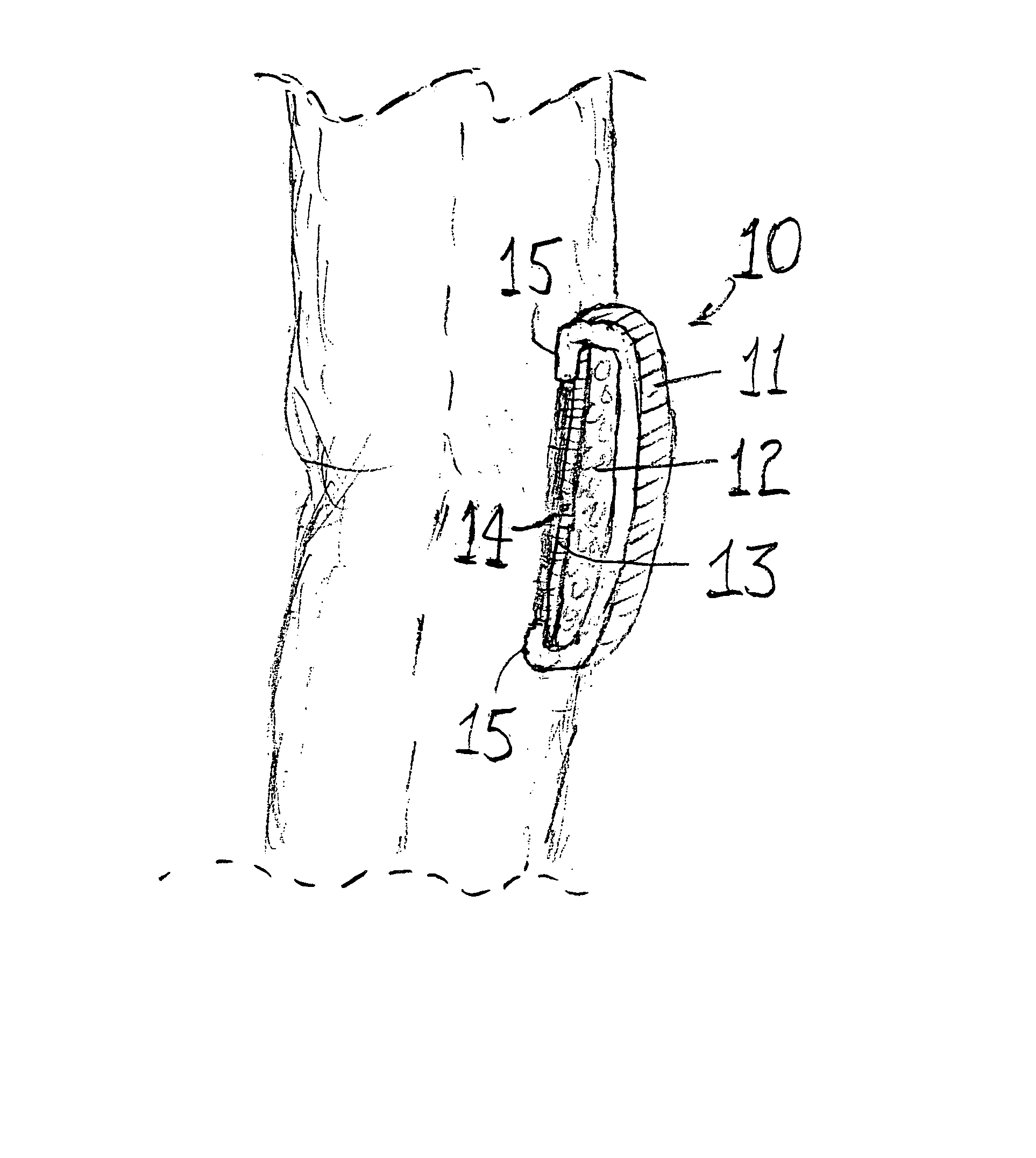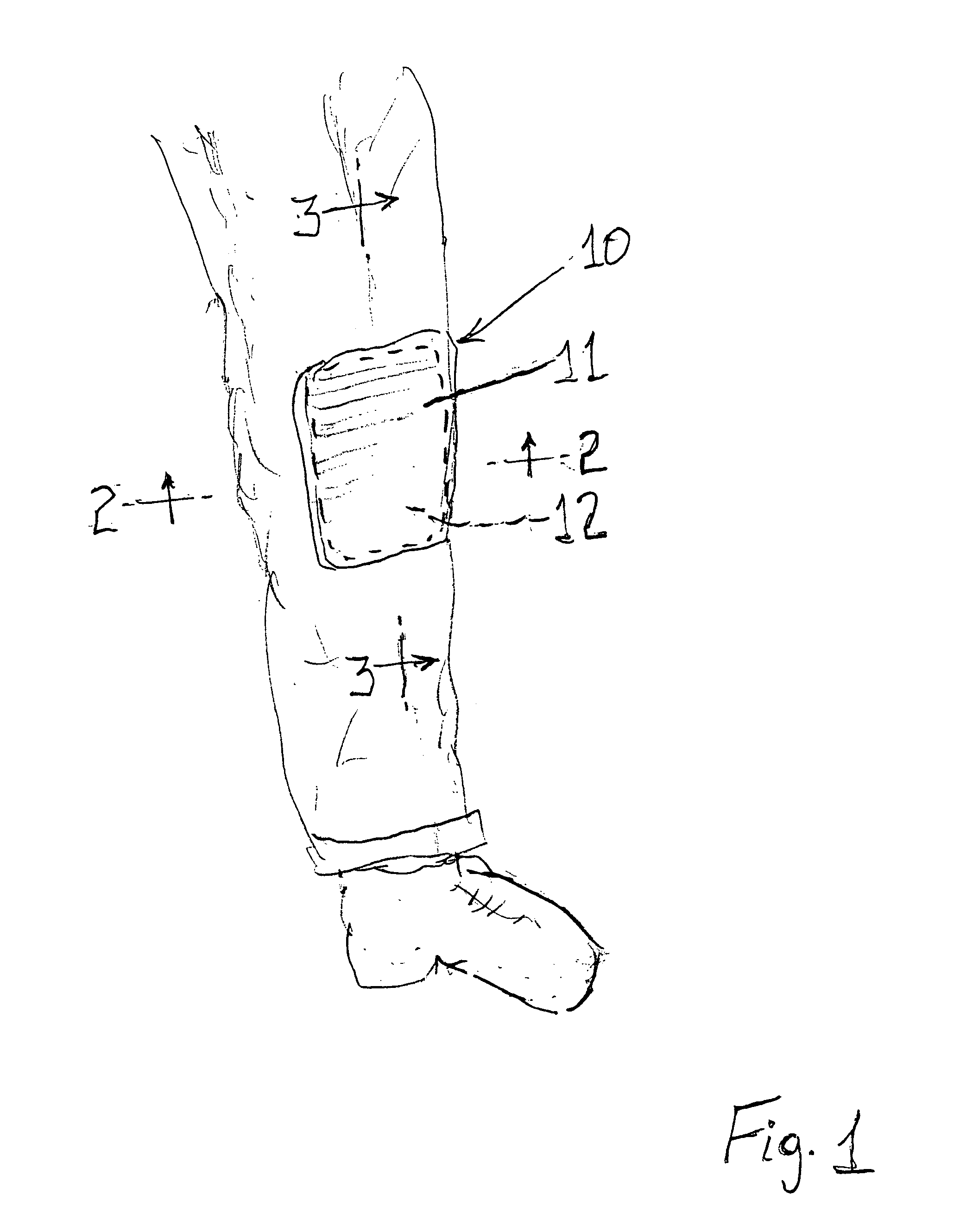Disposable detachable adhesive knee-pad
a knee-pad and adhesive technology, applied in the field of disposable detachable adhesive knee-pads, can solve the problems of irritation and injury, kneeling posture placing considerable and participants to be exposed to great discomfort and risk of knee injuries, and achieve the effect of reducing the pressure on the knee join
- Summary
- Abstract
- Description
- Claims
- Application Information
AI Technical Summary
Benefits of technology
Problems solved by technology
Method used
Image
Examples
Embodiment Construction
[0025]A disposable, detachable adhesive knee-pad having the features of the present invention 10 is depicted in FIGS. 1 though 4. The knee-pad has a front side that faces outward when the knee-pad is attached to a pants leg, as depicted in FIG. 1, and a back side, as depicted in FIG. 4, where the knee-pad attaches to the pants leg.
[0026]Referring to FIGS. 2 and 3, the knee-pad comprises an outer casing 11, which forms a concave cavity containing a padding layer 12. The padding layer 12 is bonded by a permanent adhesive layer 13 to a temporary adhesive layer 14, as well as to the peripheral edges 15 of the outer casing 11. A peel sheet 16 is releasably secured to the back side of the knee-pad to cover the outer surface of the temporary adhesive layer 14, as depicted in FIG. 4.
[0027]The outer casing 11 of the knee-pad comprises an oblong piece of a durable, flexible, impermeable, chemical-resistant plastic, such as polyethylene or polypropylene, having a thickness of 3 to 10 mils (0.0...
PUM
 Login to View More
Login to View More Abstract
Description
Claims
Application Information
 Login to View More
Login to View More - R&D
- Intellectual Property
- Life Sciences
- Materials
- Tech Scout
- Unparalleled Data Quality
- Higher Quality Content
- 60% Fewer Hallucinations
Browse by: Latest US Patents, China's latest patents, Technical Efficacy Thesaurus, Application Domain, Technology Topic, Popular Technical Reports.
© 2025 PatSnap. All rights reserved.Legal|Privacy policy|Modern Slavery Act Transparency Statement|Sitemap|About US| Contact US: help@patsnap.com



